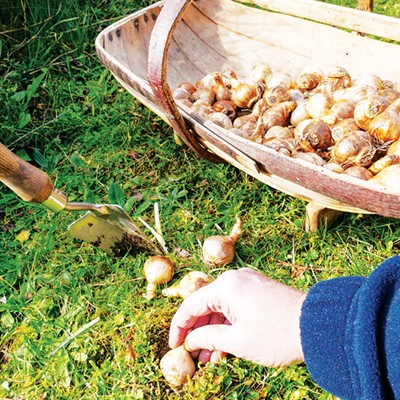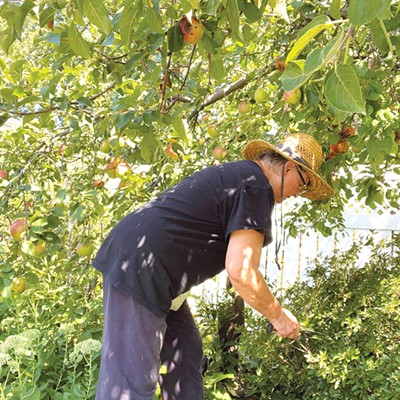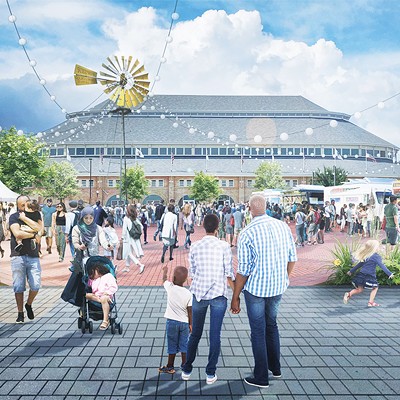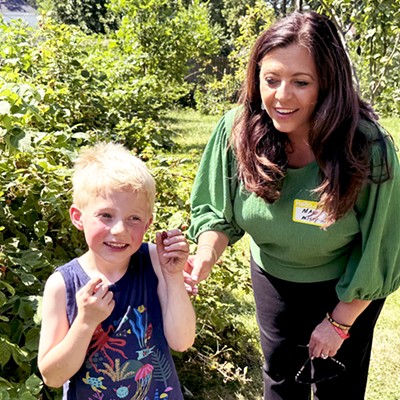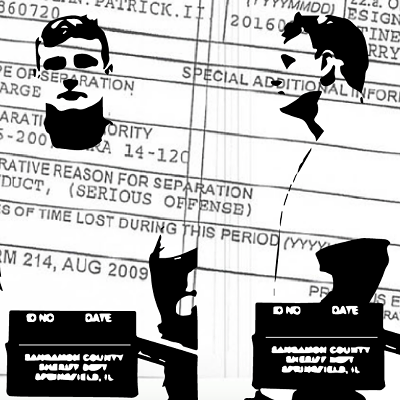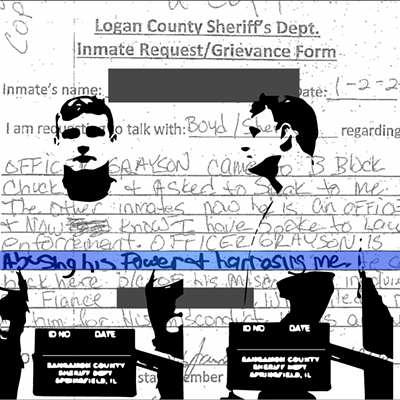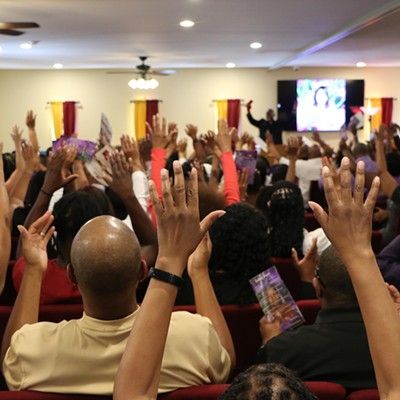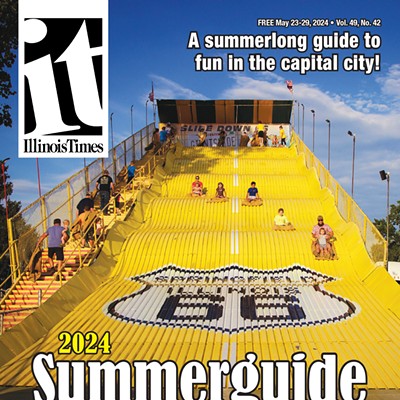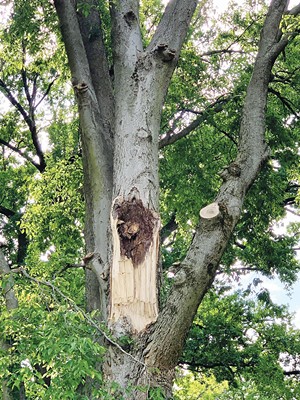
This summer's derecho caused massive damage to trees. Now is the time to be proactive and learn about tree management and how best to maintain a resilient urban tree canopy.
In the aftermath of storms, there are many unscrupulous people and others with good intentions looking to make money who lack skills and training. When branches are cut from limbs still attached to trees, energy is released, creating a significant safety hazard when branches move unpredictably. Hanging branches are called widow-makers.
If someone knocks on your door offering to help, ask for proof of insurance and credentials related to chainsaw safety and tree management. Qualified individuals should have credentials and proof of insurance handy.
"Talk to a certified arborist, not someone with a chainsaw," advises Guy Sternberg, certified arborist and owner of Starhill Forest Arboretum. The day after a storm is not the time to locate a certified arborist for the first time. Christopher Enroth, horticulture educator with University of Illinois Extension, recommends developing a relationship with a certified arborist who can assess tree health and provide advice on appropriate tree management.
Healthy trees with a strong structure are more resilient to storms. Proper pruning and removing dead wood contribute to tree health. "Consider it like a doctor's checkup," says Enroth. He recommends an annual evaluation of your trees. Enroth explains that trees don't heal – they seal and wall off damage. Wounds are carried with them and may take a long time to manifest. Most homeowners don't look high up into the canopy and lack a trained eye to see potential problems. Certified arborists trained in tree health can identify issues that need addressing. They are also trained to evaluate the level of risk and what is at risk.
What to plant, where to plant, how to plant
Many people will plant new trees this fall to replace those lost in the derecho. What type of tree to plant, where to plant and how to plant properly are important considerations.
Species diversity is critical. "Overplanting one species invites trouble," says Sternberg. There are many examples. Dutch elm disease devasted elm trees. More recently, the emerald ash borer destroyed tens of millions of ash trees. In many places red maples now comprise 50% of the urban tree canopy, setting up another potential disaster, and are not recommended.
A long-established guideline to reduce the risk of catastrophic tree loss due to pests is for the urban tree population to include no more than 10% of any one species, 20% of any one genus or 30% of any family. Dr. Frank Santamour, U.S. National Arboretum, published this guidance in 1990.
Christopher Evans, forestry extension and research specialist with the University of Illinois Department of Natural Resources & Environmental Sciences, recommends walking through your neighborhood and planting something different than what is already there. Consider native species and trees with wildlife and ecological benefits. Oaks and tupelo/sour gum/black gum are some examples. When selecting a nursery, avoid those promoting primarily red maples and selling trees no longer recommended (such as Callary pear, which is invasive and has a weak structure).
Look for trees with a healthy central leader. Enroth has observed trees in garden stores where the top has been cut to promote branching and make them look fuller. Without a strong central branch, the tree structure is weak and more likely to suffer storm damage. Enroth says a tree that looks like a skinny whip is better than a small, bushy tree.
Sternberg advises paying attention to the surroundings and finding the appropriate tree for the soil and location. Be aware of buried and overhead utilities, proximity to structures, the size of tree at maturity and soil conditions. Proper planting is also critical, as sometimes trees are planted too deeply.
Evans says good tree health starts with the roots. There should be enough space and appropriate soil for the root system to develop. Prune or remove circling roots when taking trees out of plastic pots. It can take three years for newly planted trees to become established. Larger trees can take longer and require more watering. Mulch around the tree, leaving a two-inch gap between the mulch and trunk. "Mulch like a bagel, rather than a muffin," says Enroth. Poor watering and lawnmower damage are the biggest killers of newly planted trees.
"Prevention is the best medicine," says Emily Swihart, Illinois Extension horticulture educator. While the trees are young, proper maintenance can help develop well-formed, structurally-sound trees. Evans says there should be a good flare at the base and not look like a telephone pole in the ground. Pay attention to changes in your trees over time. Take pictures seasonally and track changes which may be a warning sign. Alterations to sidewalks, driveways or landscaping can impact trees, and results may not be seen immediately.
Periodic cicadas coming next summer
Two broods of periodic cicadas will emerge concurrently early next summer for the first time since 1803. The 13-year and 17-year broods will emerge in May in central Illinois. Newly planted trees in areas with more mature trees will be most vulnerable. Females use their ovipositors to cut slits in the branches and lay their eggs. The nymphs fall down, burrow in the ground and feed on the roots. The slits in the branches damage the tree. Pesticides are not a control option. Be proactive next spring and place fine mesh netting over young trees.
Solastalgia
If you are mourning the loss of trees as a result of the derecho, it's a real thing. Australian philosopher Glenn Albrecht coined the word "solastalgia," meaning the mental, emotional or spiritual reaction of an individual, group or community to the negative transformation of their environment." There is even a book on this topic: Solastalgia: An Anthology of Emotion in a Disappearing World, edited by Paul Bogard.
—-
Resources
Find an arborist:
• International Society of Arboriculture https://www.treesaregood.org/
• Illinois Arborist Association https://illinoisarborist.org/
—-
Other useful resources:
• University of Illinois Extension Good Growing Podcasts https://extension.illinois.edu/podcasts/good-growing
• University of Illinois Extension Plant Clinic https://extension.illinois.edu/plant-clinic
• Morton Arboretum https://mortonarb.org/plant-and-protect/
• Under the Canopy tree guide https://www.hpil.org/DocumentCenter/View/6399/Under-the-Canopy—Creating-Personal-Greenspace
• Hiring a tree care professional https://extension.illinois.edu/sites/default/files/hiring_a_tree_care_professional.pdf
Karen Ackerman Witter lives in a neighborhood that had tremendous tree damage from the derecho. She recently had a certified arborist assess all of the trees in her yard, including a large hackberry that lost a huge limb in the storm.




